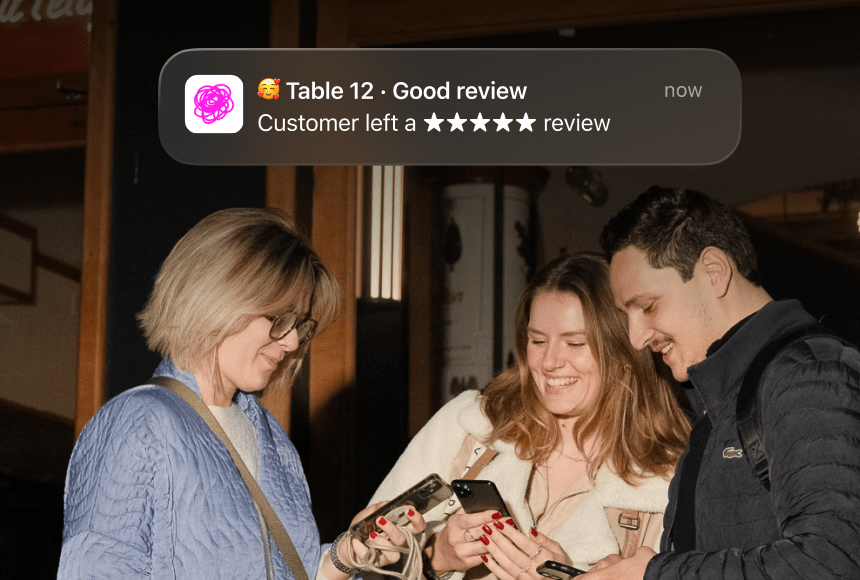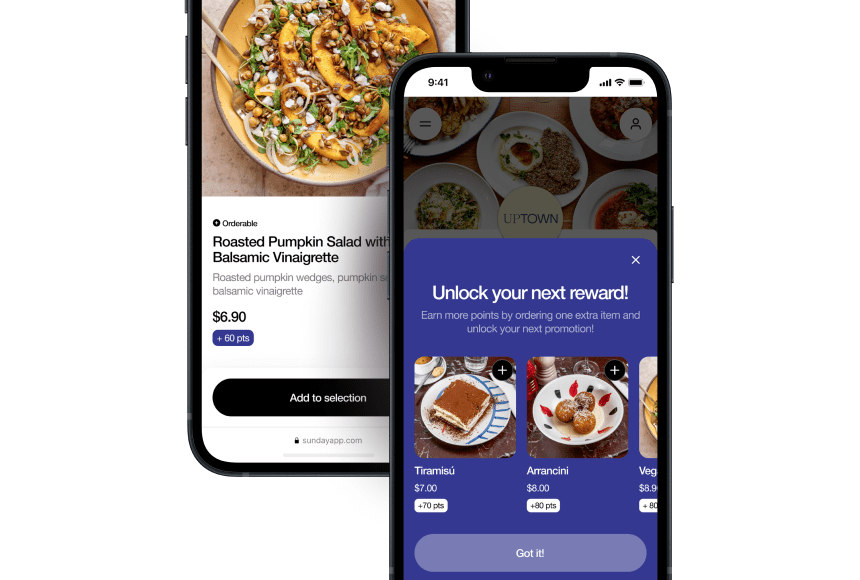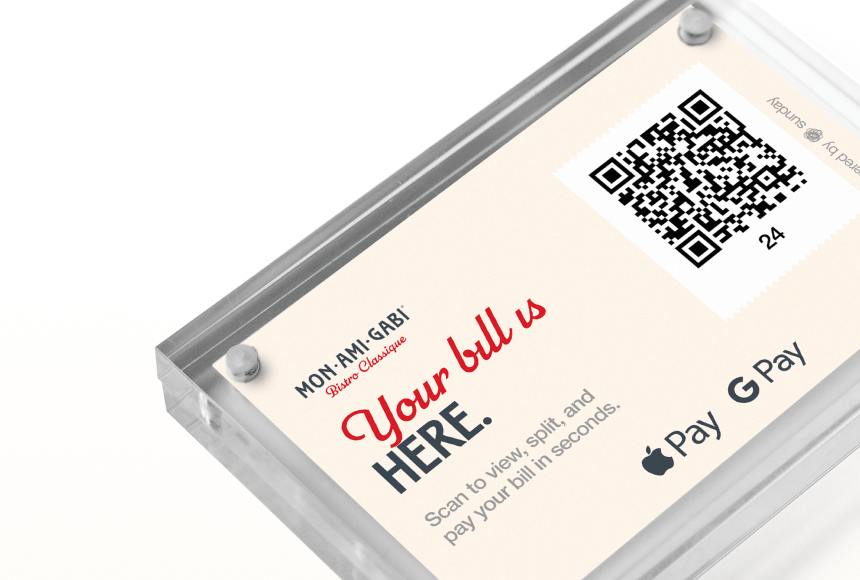
A Warm Approach to Presenting Tip Options in Your Restaurant
Introduction: The Art of Tipping with Ease
In the American restaurant world, tipping is more than just a polite gesture—it’s a significant part of a server’s income and a reflection of a guest’s overall satisfaction. While everyone wants to make sure their team is treated fairly and guests feel welcome, displaying tip options can sometimes feel…awkward. On one hand, you want to encourage generosity. On the other, you don’t want to come across as pushy or make people feel guilty.
Luckily, balancing that line between friendly suggestion and awkward request isn’t as complicated as it seems. In fact, you can turn the entire tipping process into a comforting, welcoming part of your dining experience. In this article, we’ll explore strategies that American restaurant owners can use to make tipping convenient and tactful—no uncomfortable moments, just genuine hospitality.
Why Tipping Matters in the US Restaurant Industry
Tipping customs are deeply entrenched in the United States. Most guests generally expect to tip between 15% and 20% of the total bill, and some tip even higher for exceptional service. According to a National Restaurant Association survey, a significant portion of a restaurant server’s income hinges on tips, which can influence employee satisfaction, turnover rates, and the overall mood of your establishment.
When a restaurant embraces clear, thoughtful ways of suggesting tip amounts, it not only benefits staff but can also enhance customer rapport. Think of your tip presentation as the final flourish on an exquisite dish: If it’s done tastefully, it reinforces the positive feeling about the meal and service. Mishandled, however, and it can leave a sour aftertaste.
Restaurants that master tip presentation can:
- Boost staff morale by ensuring they feel valued.
- Encourage guests to reward good service appropriately.
- Enhance the overall dining experience.
- Build a loyal customer base that appreciates transparency.
Achieving these goals involves an intentional approach. By providing suggested tip amounts (for example, 18%, 20%, 25%) clearly and unobtrusively, you remove confusion for guests while promoting fair compensation for your team.
The Psychology of Tipping: Why It’s Awkward
Restaurants rely on tips, and many guests know this—yet it still can be uncomfortable to discuss money at the table. Why is tipping such a delicate subject? The answer lies partly in cultural norms and partly in human psychology. When you place a tip line on a check or present tip suggestions on a payment terminal, guests might worry if their choice reflects well on them. They may also feel pressed to give a certain amount to avoid looking stingy.
On the restaurant side, owners and staff don’t want to come across as demanding or unappreciative. Employees might feel that framing tipping in certain ways could embarrass customers. The “ask” for a tip can carry emotional weight, so actively managing the context is key.
Consider these psychological elements:
- Social pressure: People are influenced by perceived social norms (e.g., “everyone else is tipping 20%”).
- Fear of judgment: Guests fear appearing cheap. Staff fear appearing pushy.
- Emotional reciprocity: Good service can trigger a desire in customers to reciprocate with a higher tip.
- Uncertainty: Customers can be unsure of the right percentage, especially if they’re from out of town or unfamiliar with local customs.
By acknowledging these underlying feelings, you can structure your tip presentation in a way that offers clarity rather than pressure. When done well, it feels like part of genuine hospitality—as natural as offering a coffee refill or a dessert recommendation.
Designing a Tip Invitation That Feels Natural
Picture a perfectly plated dish: it has balance, it’s approachable, and it makes a guest feel at ease just looking at it. Now, imagine applying that same logic to how you display tip options. Instead of an abrupt, in-your-face prompt that screams “Don’t forget to tip!,” aim for a subtle yet inviting presentation.
Customers appreciate a clear, friendly approach. Here are some guidelines:
- Use friendly language: Instead of “Tip amount,” use language like “Thank you for supporting our team” or “We appreciate your generosity” to set a warm tone.
- Offer multiple tip suggestions: Provide at least three suggestions (e.g., 18%, 20%, and 25%). Add a custom option for those who prefer a different percentage or a fixed amount.
- Keep it visible yet low-pressure: Whether it’s on a printed check or a digital interface, place it where guests will see it, but don’t make it blink or stand out obnoxiously.
- Highlight staff appreciation: If you’re going to include a brief note, consider referencing your staff directly: “Your tip supports our dedicated team.”
You can even spice it up with your restaurant’s personality. A playful, personal message might fit a casual café, whereas a more refined tone could suit an upscale eatery. The key is authenticity—something that reflects who you truly are and what your establishment represents.
Mentioning Tips When Presenting Checks—Is It Appropriate?
Trained servers typically hand over the check with a smile, a quick thanks, and a polite explanation of the next steps, if needed. But to keep it from feeling forced, you might wonder how much detail should go into “mentioning” the tip. Many owners prefer that servers let the check or payment interface speak for itself, especially if the suggested tipping amounts are displayed.
However, in some situations—say if you have a large party or a guest from overseas who might be unfamiliar with US tipping norms—it’s not unreasonable for your server to offer a brief explanation: “Some guests prefer 18%; others go higher, but please feel free to tip as you wish.” This balance respects the customer’s decision while being considerate about cultural differences.
Integrating Digital Payment Solutions: Making Tipping Seamless
Contactless and digital payment solutions can transform the tipping process into something streamlined and almost effortless. Ever hear guests ask, “Can I pay with my phone?” or “Does your terminal accept contactless?” As technology evolves, more and more diners expect a swift, convenient checkout experience. And with it, automatically displayed tip suggestions can become a natural part of the payment process.
When guests can simply scan a QR code at the end of their meal and see user-friendly tip suggestions on their phone, it removes the guesswork. By merging the tip prompt into the payment flow, you’re no longer relying on a moment of awkward back-and-forth. Instead, you’re giving diners an easy, familiar tool that encourages them to tip in a comfortable way.
Some benefits of embracing digital solutions like sunday:
- Guests can seamlessly pay with minimal server intervention.
- You can customize tip options and add notes of gratitude.
- Automated tipping suggestions reduce confusion over percentages.
- Opportunity for additional features, like quick feedback or fun loyalty perks.
By weaving the tipping process into a digital interface, you’re not just pushing for bigger tips. You’re offering guests a friction-free experience that shows you respect their time and comfort.
Harnessing the Power of Subtle Visuals
Visual design is crucial in ensuring your tipping prompts feel natural. Whether your restaurant uses paper checks or digital screens:
- Color coding: Use neutral colors for the tip line but maybe a subtle highlight or spotlight for suggested amounts.
- Font size and type: Avoid extra-large, bold fonts that make customers feel singled out. Keep the layout clear and legible but calm.
- Minimal clutter: Don’t crowd your check or screen with ads or too many calls to action. A simple layout helps guests calmly focus.
Imagine a digital tip screen with gentle colors, big easy-to-tap percentage buttons, and a short, friendly message: “We hope you enjoyed your meal! If you’d like to leave a tip, please choose one of the options below or enter your own amount.” That’s it—simple, warm, and intuitive.
The Role of Good Training: Preparing Staff for Tip Questions
Even the most user-friendly tech won’t eliminate all confusion. Staff training remains a vital ingredient in your recipe for success. Here’s what your servers should know:
- Be prepared to explain how tips are distributed: If asked, staff should be able to share whether tips are pooled, partially shared, or kept individually.
- Rehearse polite explanations: Teach a quick, kind phrase for times when guests need clarity: “You can see our suggested tips on the terminal, but feel free to enter any amount you’re comfortable with.”
- Stay positive, never pushy: Discourage staff from guilting guests into tipping. A genuine smile and friendly manner go much further.
- Offer reassurance: Guests unfamiliar with US practices might ask, “Is tipping required?” Staff can politely respond it’s traditional but always at the diner’s discretion.
When servers know how to demystify the tipping process, it fosters an environment free of discomfort. Guests will appreciate the clarity, and staff will feel confident rather than anxious or awkward.
Examples in Action: Crafting the Right Note with Real-World Scenarios
Let’s walk through a couple of scenarios to see how these ideas might play out in the real world.
Scenario 1: Cozy Neighborhood Bistro
You run a quaint, family-friendly eatery, where regulars pop in weekly. Your written checks have suggested tip amounts right at the bottom—18%, 20%, and 25%—preceded by a friendly note: “Thank you for supporting our hard-working team!” When your server hands over the check, they add, “Hope you enjoyed everything! Feel free to let us know if you have any questions about the bill.” The tip suggestions do the talking without your staff hovering or applying pressure.
Scenario 2: Urban Fast-Casual Restaurant with Digital Solutions
In a vibrant city location, your guests are tech-savvy. They love scanning a QR code to access their bill. Once they open the digital payment screen, they see three recommended tip amounts, plus a space for a custom tip. Beside the tip options is a note: “We appreciate your visit! Tips support your server and kitchen heroes.” By placing the tip recommendation right in the middle of the seamless payment flow, you’re gently guiding diners without cornering them.
Both scenarios revolve around clarity, warmth, and convenience—the trifecta for making tip requests feel natural.
The Culinary Metaphor: Tips as the Icing on the Cake
Picture one of your signature desserts. Perhaps it’s a chocolate ganache torte or a classic cheesecake. You have the cake itself, which represents your core dining experience—delicious food, great service, a welcoming atmosphere. Then there’s the icing: the tip. It’s not mandatory for the cake to taste good, but it’s the sweet little flourish that leaves everyone on a high note.
In the same way, your approach to tipping should be the whipped cream on top of the dining experience, not an overwhelming final demand that spoils the pleasure. By integrating tip suggestions smoothly, you’re simply inviting guests to enjoy that finishing touch.
Encouraging Google Reviews…and How Tipping Ties In
Tips and online reviews often move together in a restaurant context. A positive dining experience frequently translates to generous tips and glowing feedback, while a negative one can reduce gratuities and lead to critical comments on platforms like Google.
If you use a service like sunday that allows for easy payments and encourages customers to share their feedback with a quick link to leave a Google review, consider how tip presentation can influence people’s mood and willingness to talk about their experience. When tipping is made simple and transparent, patrons are more likely to feel good about the meal. That good feeling can prompt them to leave a fantastic review.
Here’s a potential sequence:
- Guest scans the bill’s QR code.
- Guest easily selects a tip amount without stress.
- Guest sees an optional button prompting a quick Google review: “We’d love to know how you liked everything!”
- Guest leaves a positive review, buoyed by the sense of having been treated with genuine hospitality.
In focusing on a smooth tipping process, you’re nurturing a garden of goodwill that helps your business flourish both financially and reputationally.
Building a Tip-Friendly and Inclusive Culture
Restaurants that have a strong internal culture where employees feel valued and respected ultimately see better tipping outcomes. Kindness and inclusivity tend to pay off. When your team believes in the service you offer, they deliver a level of care that prompts more gratitude from diners.
Practically speaking, consider these ideas:
- Team communication: If you pool tips, be transparent about how they’re shared.
- Fair wages: Ensure your wages are competitive and fair, so tips truly feel like bonuses rather than a necessity to survive.
- Respect diversity: Everyone from the dishwasher to the head chef has a role in creating that memorable experience. Reflect that in your policies and training.
When your staff is happy and supported, they engage with guests naturally—leading to a better experience for everyone involved.
Overcoming Cultural Differences: Tipping for All Guests
American tipping culture can be confusing for foreign visitors—and even sometimes for Americans traveling between states with varying customs. Some travelers might come from places where tip is already included or tipping simply isn’t the norm. If you serve a diverse clientele, consider delicately clarifying the local custom.
A printed check or digital prompt could include a brief statement: “In the US, leaving a tip for your server is customary. We suggest 18%, 20%, or 25% as a way to say thank you for great service.” This helps avoid cultural misunderstandings without driving anyone into an awkward corner.
Anticipating Questions: Arming Yourself with Clear Explanations
Aside from training your staff to handle direct questions, think about how you, as an owner, can proactively offer clarity:
- Post a brief note on your menu or website stating that tipping is optional but very much appreciated and goes directly to team members.
- Have a short Q&A section in the digital payment flow: “Where do tips go?” with a succinct answer.
- Be transparent—some guests might feel relieved to learn how tips contribute to a living wage for your staff, especially in an industry requiring up-tempo schedules and dedication.
Clarity reduces anxiety, which, in turn, fosters the goodwill you need for comfortable tipping interactions.
Implementing Gentle Reminders: How Much Is Too Much?
Subtlety is the key word. One well-placed reminder—on the check, in the digital interface, or as part of your server’s friendly closing remarks—is usually enough. Overdoing it, like plastering tip reminders across napkin dispensers, menu covers, or table tents, can come across as desperate.
Striking a balance is essential. By providing one or two well-crafted reminders and trusting that your guests will respond when given a pleasant nudge, you’re ensuring they don’t feel overwhelmed. In such an atmosphere, diners are more likely to perform acts of generosity happily, rather than out of a sense of obligation.
Staying Up to Date on Payment Technology
While traditional checkbooks and cash tips remain common, payment technology is evolving at lightning speed. Customers increasingly value having security, speed, and convenience at their fingertips. Whether it’s adapting to mobile wallets or scanning a QR code to pay, incorporating modern solutions is almost mandatory for many restaurants aiming to stay competitive.
Tip functionalities within digital systems often allow customization in real time—so if you find certain tips suggestions resonate more (or less) with your clientele, you can adjust with ease. Offering optional features like splitting the bill or dividing tips among the staff can show how invested you are in a smoother, friendlier process.
A Practical Table: Comparing Tip Suggestion Methods
| Method | Advantages | Drawbacks |
|---|---|---|
| Printed Check with Suggested Percentages |
|
|
| Digital Payment Terminal with Tip Screen |
|
|
| QR Code with Customizable App/Website |
|
|
Use this table as a quick reference, helping you decide on or refine your tipping workflow.
Preventing and Handling Negative Reactions
Even the best strategies can’t guarantee that every customer will react positively. Occasionally, you might encounter someone who finds any tip suggestion off-putting. What do you do then?
Simply respect their choice, apologize if they feel uncomfortable, and emphasize that tipping is never mandatory. Staff should be trained to stay calm and polite—if a guest reacts strongly, it could just be their personal stance or previous experiences. As long as your approach is transparent and respectful, you can rest assured you’re taking the high road.
Bringing It All to the Table
Offering tip options shouldn’t feel awkward when done with a spirit of genuine hospitality and gratitude. By presenting tipping in a straightforward, considerate way, you not only boost your staff’s morale and income but also deepen the bond with your guests. Warmth, clarity, and subtlety form the winning recipe: a trifecta that feeds a sense of togetherness and mutual respect.
Think of your tip invitation like a well-crafted side dish—it is there to enhance the meal, not overshadow the main course. By integrating helpful suggestions into your payment process—be it digital, traditional, or a blend—you’re creating an atmosphere where diners feel at ease and servers feel valued.
And that’s the sweet spot every restaurant owner aims for.
Frequently Asked Questions (FAQ)
1. What are the most common tip percentages in US restaurants?
Typically, guests tip around 15% to 20%, though many opt for 18%, 20%, or even 25% for exceptional service. It varies by region, preference, and the quality of the dining experience.
2. How can I reduce the awkwardness of asking for tips?
Subtlety is key. Use friendly, welcoming language on checks or digital interfaces. Train staff to mention the tip suggestion gently, so guests are informed but not pressured. A well-designed interface—like a digital payment solution—can integrate tipping seamlessly without making it feel like an uncomfortable add-on.
3. Is it okay to include a mandatory service charge?
Some restaurants opt for a mandatory service charge, especially for large parties, but it’s a delicate subject. If you do, be crystal clear about it on your menu or when presenting the check. This charge may cover the server’s wage, but many guests still leave an additional tip for exceptional service.
4. What if we serve a lot of international guests?
Consider a polite note explaining US tipping norms. Clarify that gratuities typically go to the staff. Offer suggested percentages or amounts to guide them, but always indicate it’s voluntary.
5. Do digital payment solutions really encourage higher tips?
Several studies suggest that straightforward digital prompts with preset tip options can lead to higher average gratuities. By removing confusion around percentages, guests frequently choose the “middle” or a higher-suggested tip amount, benefiting both staff and the overall dining atmosphere.
6. How can we ensure staff feel supported in our tipping policies?
Maintain open communication about tip distribution, whether pooled or individual. Pay fair base wages so tips are a bonus, not a necessity for survival. Foster a culture that respects every staff member’s contribution, from the front of house to the kitchen—this creates a happy team that customers can sense and appreciate.
Find out more today
Drop us your details below and we’ll reach out within the next 24h
Get the full, detailed picture.
sunday elevates your business with insightful data, instant feedback and precise analytics.




